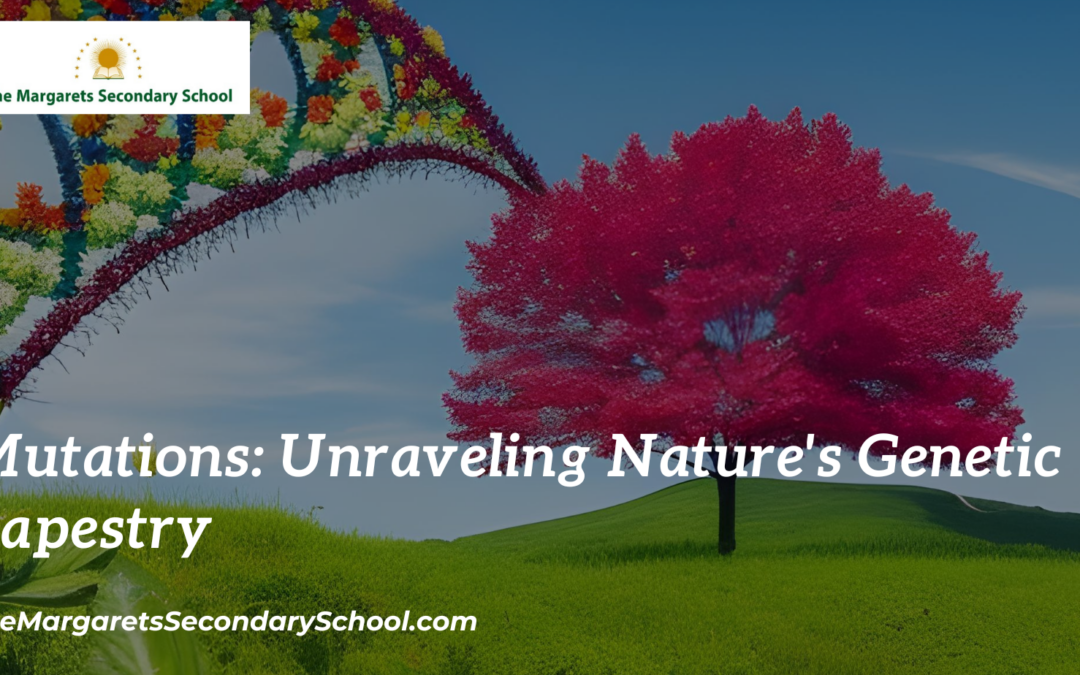Mutations
In the intricate world of genetics, mutations are the subtle but powerful forces that drive evolution, shape diversity, and sometimes lead to the emergence of genetic disorders. These genetic alterations are the result of changes in DNA sequences and have far-reaching implications that extend from the microscopic level of molecules to the grand tapestry of life itself.
The Dance of DNA: Understanding Mutations
DNA, the molecular foundation of life, consists of a sequence of nucleotide bases – adenine (A), thymine (T), cytosine (C), and guanine (G) – that encode the instructions for building and maintaining living organisms. Mutations occur when these bases are altered, deleted, or inserted into a DNA sequence, leading to changes in the genetic code.
There are different types of mutations, each with its own effects:
- Point Mutations: These involve the replacement of a single nucleotide with another. This can result in three possible outcomes: a silent mutation (no change in the amino acid sequence), a missense mutation (a different amino acid is incorporated into the protein), or a nonsense mutation (an early stop codon is introduced, resulting in a truncated protein).
- Insertions and Deletions (Indels): These mutations involve the addition or removal of nucleotides from the DNA sequence. Indels can cause a shift in the reading frame, leading to a completely different protein being synthesized downstream.
- Duplication and Inversion: These mutations involve the replication of a segment of DNA or the reversal of a segment’s orientation, respectively. These changes can have significant impacts on gene expression and protein function.
- Translocation: This mutation occurs when a segment of DNA breaks off and attaches to another chromosome. This can result in altered gene regulation or the creation of fusion genes with new functions.
Forces of Evolution: Beneficial Mutations
While mutations are often associated with negative outcomes, such as genetic disorders, they also play a pivotal role in the process of evolution. Some mutations are beneficial and can lead to adaptations that enhance an organism’s survival and reproductive success in its environment. Over time, these beneficial mutations can accumulate in populations, driving the diversity of life forms.
One famous example of a beneficial mutation is the sickle cell trait in humans. Individuals with one copy of the mutated gene are more resistant to malaria, offering a selective advantage in regions where the disease is prevalent. This demonstrates how mutations can lead to traits that increase an organism’s fitness.
The Dark Side: Harmful Mutations
However, not all mutations are advantageous. Harmful mutations can lead to genetic disorders, diseases, or developmental abnormalities. Some mutations disrupt the normal function of genes, leading to dysfunctional proteins or regulatory processes. These mutations can be inherited from parents or arise spontaneously due to errors in DNA replication or exposure to mutagenic agents such as radiation or certain chemicals.
Cystic fibrosis, Huntington’s disease, and certain types of cancer are examples of genetic disorders caused by harmful mutations. These mutations can have profound effects on an individual’s health and quality of life.
Manipulating Nature: Genetic Engineering
In recent decades, advances in biotechnology have enabled scientists to manipulate and harness mutations for various purposes. Genetic engineering involves intentionally introducing specific mutations into an organism’s DNA to achieve desired outcomes. This technology has applications in agriculture, medicine, and research.
For instance, genetically modified organisms (GMOs) are created by introducing beneficial mutations into crop plants to enhance their resistance to pests, improve nutritional content, or increase yield. In medicine, gene therapy aims to correct or replace mutated genes responsible for genetic disorders.
The Evolutionary Symphony Continues
Mutations are the subtle notes that compose the evolutionary symphony of life. While some mutations contribute to the diversity and adaptability of species, others can lead to genetic disorders and diseases. Our growing understanding of mutations and their effects is reshaping fields like medicine, agriculture, and conservation. As we continue to unravel the secrets of DNA and explore the world of genetics, mutations remain a central theme in the ongoing story of life’s complexity and beauty.





